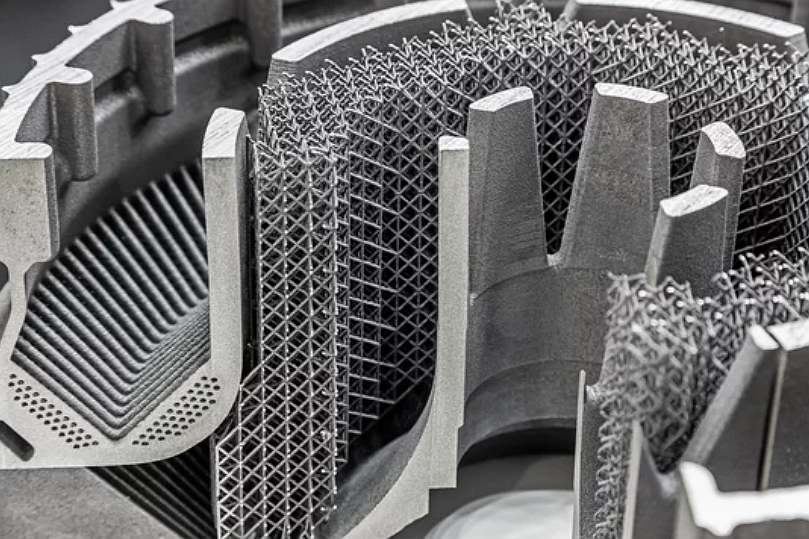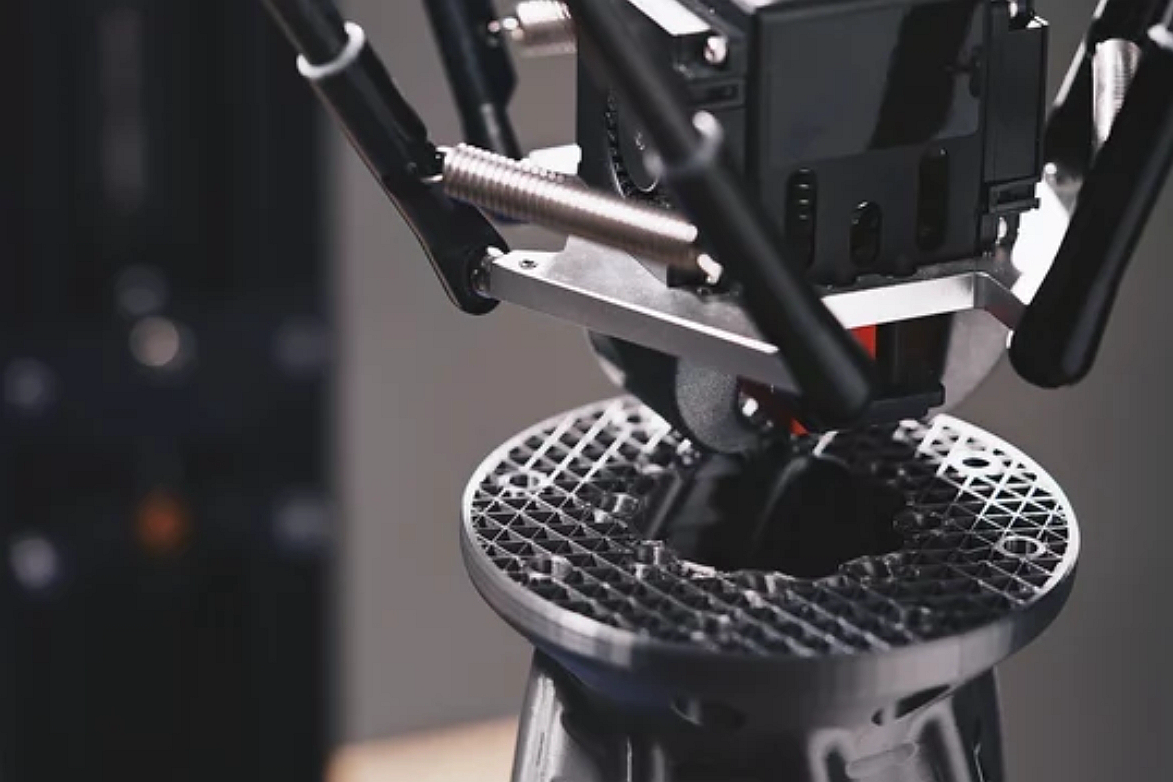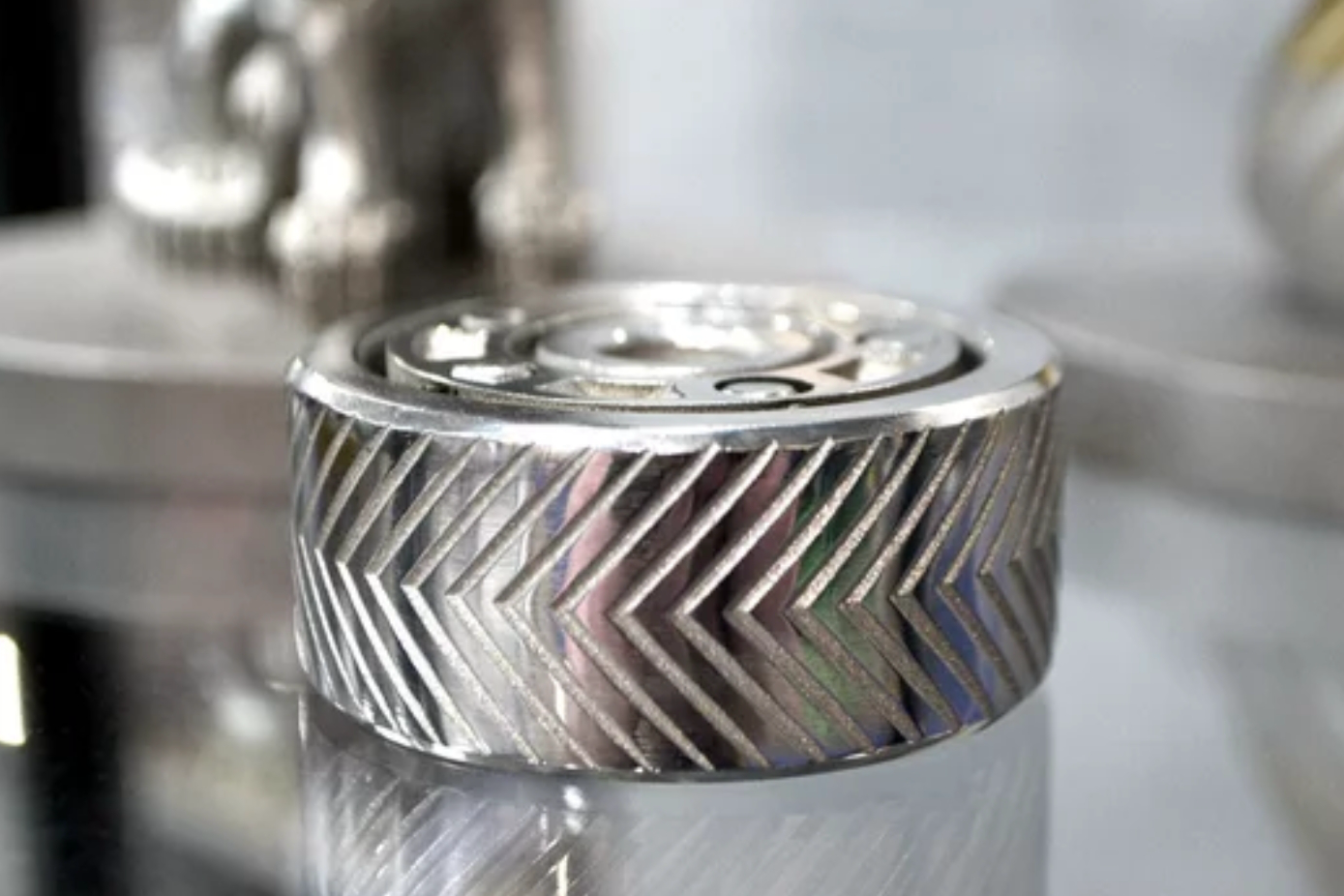Selective Laser Melting (SLM): 3D Printing Service for Metal And Superalloys
In the fast-evolving world of manufacturing, the advent of 3D printing technologies has unleashed a new era of innovation, particularly in metal fabrication. Among the emerging techniques, Selective Laser Melting (SLM) stands out for its remarkable capability to transform metal and superalloys into complex, high-strength components with unparalleled precision. SLM, a flagship method in the additive manufacturing arsenal, offers industries a pathway to create parts that were once deemed impossible or too costly to produce.
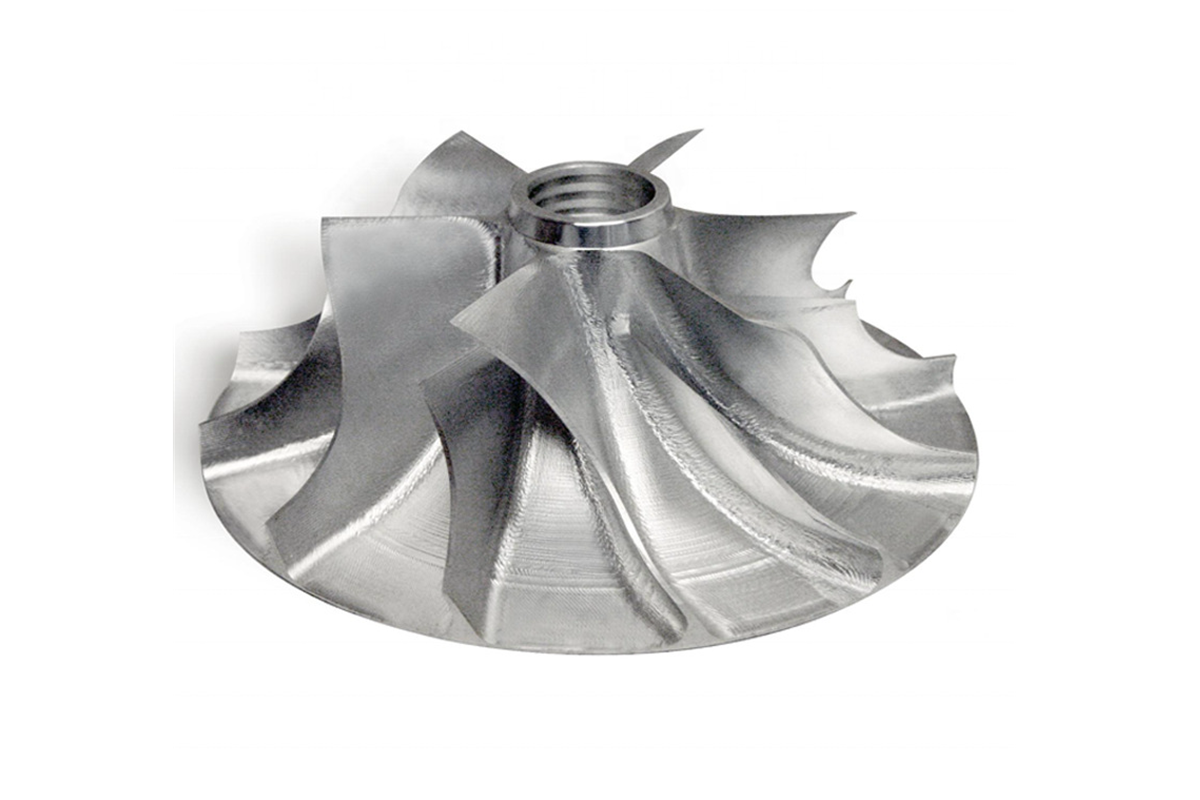
Selective Laser Melting (SLM) harnesses the power of focused laser energy to fuse fine metal powders, layer by layer, into solid structures directly from digital blueprints. This process epitomizes manufacturing flexibility and efficiency and redefines what's possible regarding part complexity and material performance. From aerospace to medical applications, SLM is paving the way for groundbreaking advancements by enabling the production of components that combine intricate designs with the robustness of metal and superalloys.
The SLM Process Explained
Selective Laser Melting (SLM) represents a significant advancement in additive manufacturing, especially in metal and superalloys fabrication. At its core, SLM is about precision, complexity, and the transformation of digital designs into tangible, high-performance parts. This section will dissect the SLM process, providing insights into how it differentiates itself from other metal 3D printing technologies and its unparalleled capabilities.
Understanding the SLM Workflow
The SLM process begins with a digital 3D model, typically designed in CAD software. This model is then sliced into thin, horizontal layers, translating complex geometries into a series of cross-sectional slices that serve as instructions for the SLM machine. Here's a step-by-step breakdown of the SLM process:
Preparation: A layer of metal powder is evenly distributed across the build platform inside the SLM printer. The thickness of this layer can be as small as a few micrometers, allowing for fine details and smooth surfaces.
Laser Sintering: A high-powered fiber laser scans the surface of the metal powder, selectively melting and fusing the particles according to the cross-section of the 3D model. The laser's precision ensures that even the most intricate details are accurately reproduced.
Layering: Once a layer is sintered, the build platform descends by one layer thickness, and a new layer of powder is applied. The process repeats, with each layer fusing to the one beneath it, gradually building up the part from the bottom up.
Post-Processing: After the build process is complete, the part can cool. It is then removed from the powder bed, with excess powder being recycled for future use. Post-processing steps, such as heat treatment, support removal, and surface finishing, may be required to achieve the desired mechanical properties and aesthetics.
Comparative Advantages of SLM
SLM stands apart from other metal 3D printing techniques through its ability to produce fully dense parts with complex geometries that are impossible to create using traditional manufacturing methods. Unlike Direct Metal Laser Sintering (DMLS) or Electron Beam Melting (EBM), which also cater to metal parts, SLM excels explicitly in:
Material Efficiency: SLM minimizes material wastage by using only the powder required to build the part, with the rest reusable.
Structural Integrity: Parts made via SLM exhibit excellent mechanical properties comparable to those of forged counterparts due to the complete melting and fusing of the powder particles.
Design Freedom: The precision and control offered by SLM allow for incorporating complex internal structures, such as honeycombs and lattices, for lightweighting without compromising strength.
Precision and Control
The hallmark of SLM is its exceptional precision and control over the melting process, facilitated by advanced laser systems and sophisticated software algorithms. This control is crucial for achieving the desired material properties and dimensional accuracy, especially when working with superalloys known for their challenging machinability and high-temperature performance.
Advantages of Using SLM for Metal Parts
Selective Laser Melting (SLM) has become a cornerstone technology in additive manufacturing, particularly for metals and superalloys. This technology has ushered in a new era of design and manufacturing possibilities, offering many advantages over traditional fabrication methods and other metal 3D printing technologies. Here, we delve into the unique benefits that make SLM an invaluable asset for producing metal parts.
Speed and Efficiency in Prototyping and Production
One of the most significant benefits of SLM is its ability to shorten the prototype-to-production lifecycle significantly. Traditional metalworking methods often involve multiple stages and extensive manual labor, from mold making to machining and finishing. SLM simplifies this process by directly creating parts from digital models, eliminating the need for tooling and substantially reducing lead times. This efficiency is particularly beneficial in industries where speed to market is crucial, allowing for rapid iteration and refinement of designs.
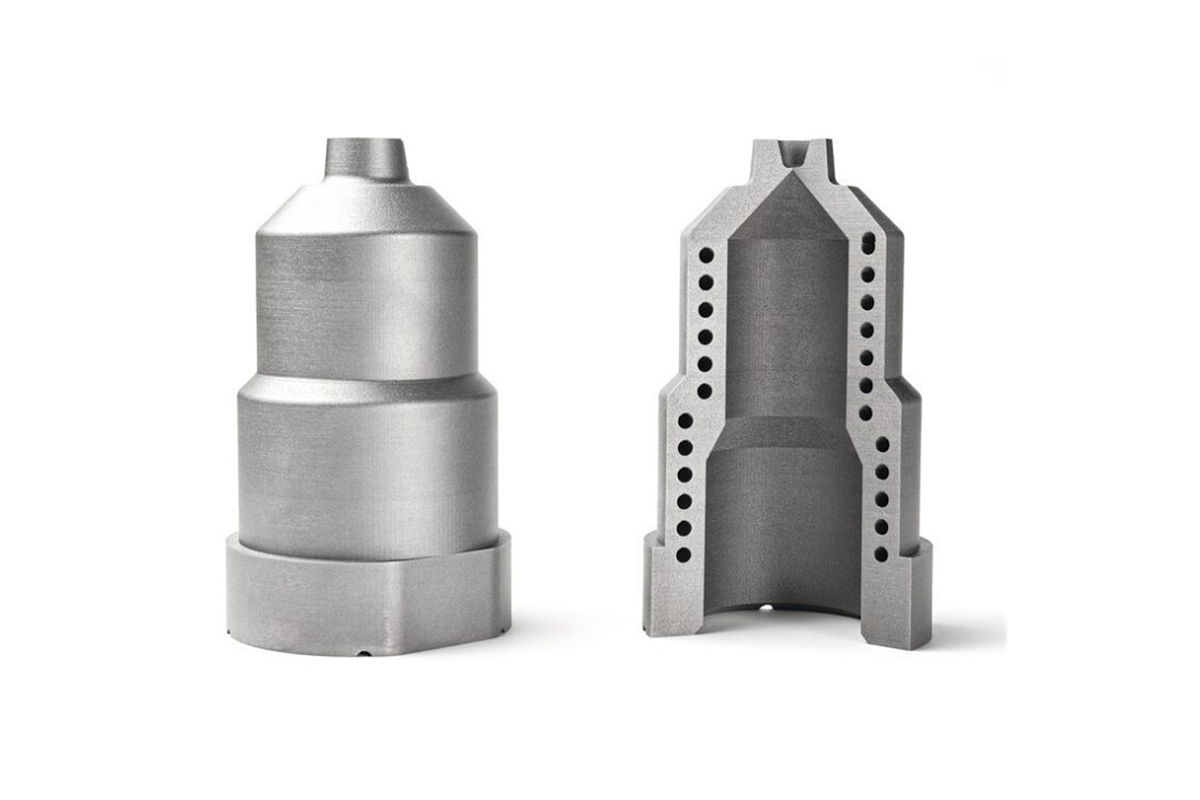
Complexity at No Extra Cost
SLM stands out for its "complexity for free" approach. In traditional manufacturing, complexity often correlates with increased costs due to the need for specialized tooling or intricate machining processes. However, SLM enables the fabrication of parts with complex geometries, including internal structures and channels, at no additional cost. This capability not only fosters innovation in design but also allows for the optimization of parts for performance, such as improved strength-to-weight ratios and enhanced thermal management.
Unparalleled Strength and Durability
Parts manufactured through SLM exhibit excellent mechanical properties, often surpassing those of their traditionally manufactured counterparts. The process achieves nearly complete density, resulting in parts with high strength, durability, and fatigue resistance. These properties are especially advantageous for aerospace, automotive, and industrial applications, where reliability and performance under stress are paramount.
Material and Waste Efficiency
SLM also promotes material efficiency and sustainability. Unlike subtractive manufacturing processes, which can produce significant waste, SLM uses only the material necessary to build a part, with unused powder often recyclable for future builds. This efficiency reduces material costs and minimizes the environmental impact associated with waste.
Customization and On-Demand Manufacturing
The digital nature of SLM supports customization and on-demand manufacturing, allowing for the production of bespoke parts without needing inventory. This aspect benefits medical implants and aerospace components, where customization can significantly enhance performance and fit.
Material Spectrum in SLM
Selective Laser Melting (SLM) technology opens up a new frontier in manufacturing metal parts, offering unparalleled flexibility in material choice. This adaptability is essential when working with metals and superalloys, as each material brings distinct properties and advantages. Understanding the broad spectrum of materials available for SLM, from titanium to nickel-based superalloys, is crucial for leveraging this technology to its fullest potential.
Overview of Metals and Superalloys Compatible with SLM
Titanium Alloys: Known for their exceptional strength-to-weight ratio and biocompatibility, titanium alloys are widely used in aerospace, automotive, and medical industries. SLM technology facilitates the production of complex titanium parts that are lightweight yet durable, ideal for aerospace structural components and custom medical implants.
Stainless Steel: Versatile and corrosion-resistant, stainless steel is a staple in manufacturing. Through SLM, parts made from stainless steel can achieve complex geometries and internal structures that are impossible with traditional methods, making them suitable for various applications, including tooling, automotive parts, and consumer goods.
Aluminum Alloys: Aluminum alloys are prized for their lightweight properties and thermal conductivity. SLM allows for the production of intricate aluminum parts with enhanced performance characteristics, perfect for automotive and aerospace applications where weight reduction is crucial.
Nickel-based Superalloys: These alloys are known for their high-temperature resistance and strength, making them essential for turbine blades, rocket engines, and other high-temperature applications. SLM enables the creation of nickel-based superalloy parts with complex cooling channels and geometries that significantly improve performance.
Cobalt Chrome: Cobalt Chrome is renowned for its wear resistance and high strength at elevated temperatures. In the medical field, SLM-produced Cobalt Chrome parts are used for dental and orthopedic implants, providing long-lasting, custom solutions for patients.
Benefits and Typical Applications of Each Material
The choice of material in SLM is dictated by the specific requirements of the part being produced. For instance, titanium alloys are chosen for applications where lightweight and strength are paramount, such as aerospace components and personalized medical devices. On the other hand, stainless steel's versatility and corrosion resistance make it ideal for various industrial applications, from machinery parts to consumer products.
Challenges Associated with SLM Materials
While SLM offers significant advantages in terms of material versatility, there are challenges to consider, including:
Material Handling and Safety: Many metal powders used in SLM, such as titanium and aluminum, are reactive or flammable under certain conditions. Proper handling and storage protocols are essential to ensure safety.
Post-processing Requirements: Depending on the material and application, parts produced via SLM may require post-processing steps such as heat treatment, machining, or surface finishing to achieve the desired mechanical properties or aesthetic qualities.
Cost Considerations: High-performance metals and superalloys can be expensive, and the SLM process may incur additional costs related to powder preparation, machine operation, and post-processing.
Industrial Applications of SLM
Selective Laser Melting (SLM) technology has transcended the boundaries of traditional manufacturing, introducing a new era where complex metal parts are produced with unprecedented speed and precision. Its ability to handle a variety of metals and superalloys has made SLM a pivotal technology across numerous industries. This section delves into the diverse industrial applications of SLM, showcasing its transformative impact and the value it brings to each sector.
Aerospace Industry
The aerospace sector is at the forefront of adopting SLM technology due to its demand for lightweight, high-strength components. SLM’s capability to produce parts with complex geometries and reduced weight without compromising strength or durability is invaluable. Aerospace applications include:
Engine Components: Fabricating parts like fuel nozzles and turbine blades with complex internal cooling channels that enhance performance while reducing weight.
Structural Components: Producing lightweight structural components contributing to fuel efficiency and overall aircraft performance.
Automotive Industry
In the automotive industry, SLM is revolutionizing how components are designed and manufactured, particularly for high-performance and luxury vehicles where customization and performance are key:
Custom Parts: Enabling the production of customized parts for limited edition models, including gearboxes, exhaust systems, and engine components.
Lightweight Structures: Creating components with complex lattice structures that reduce weight without sacrificing strength, contributing to enhanced vehicle efficiency and performance.
Medical Sector
SLM’s ability to produce biocompatible, custom-fitted implants and medical devices has made it a game-changer in the medical field:
Orthopedic Implants: Manufacturing patient-specific implants that perfectly match the individual's anatomy, improving surgical outcomes and recovery times.
Surgical Instruments: Creating complex surgical tools and guides customized for specific procedures, enhancing precision and effectiveness in surgeries.
Energy Sector
The energy sector benefits from SLM’s capacity to produce durable components capable of withstanding extreme conditions, particularly in renewable energy and oil & gas applications:
Wind Turbine Components: Producing parts for wind turbines that optimize efficiency and durability, even in harsh environmental conditions.
High-Performance Parts: Fabricating components used in oil and gas exploration and extraction that require high strength and resistance to corrosion and high temperatures.
Tooling and Mold Making
SLM has also found significant applications in tooling and mold making, offering faster turnarounds and the ability to incorporate complex features:
Conformal Cooling Channels: Creating molds with conformal cooling channels that significantly reduce cooling times and improve the quality of injection-molded parts.
Rapid Tooling: Enabling the rapid production of tooling for short-run manufacturing and prototyping, reducing lead times and costs.
Navigating the Challenges of SLM
While Selective Laser Melting (SLM) is a revolutionary metal 3D printing technology offering unparalleled precision and design freedom, it is not without its challenges. Addressing these hurdles is essential for maximizing the technology's potential and ensuring the successful integration of SLM into manufacturing workflows. This section explores the primary challenges associated with SLM and outlines strategies for overcoming them.
Technical Challenges and Solutions
Residual Stresses and Distortion: The high-energy laser used in SLM can introduce significant residual stresses into parts, potentially leading to warping or distortion. Solution: Implementing proper part orientation, support strategies, and post-processing heat treatments can mitigate these effects, ensuring dimensional accuracy and structural integrity.
Surface Roughness: While SLM can produce parts with complex geometries, the surface finish may only sometimes meet the requirements for specific applications. Solution: Secondary processes like machining, polishing, or chemical smoothing can be employed to achieve the desired surface quality.
Material Properties Consistency: Ensuring that parts have consistent material properties throughout is a challenge due to the layer-by-layer construction method. Solution: Optimizing the SLM process parameters, such as laser power, scan speed, and hatching strategies, can promote uniform microstructures and mechanical properties.
Operational Challenges and Considerations
Powder Management: Handling and storing metal powders for SLM requires strict safety measures due to their reactive nature and potential health risks. Solution: Establishing comprehensive powder management protocols, including proper storage, handling, and recycling procedures, is critical for safe operations.
Cost and Accessibility: The initial investment for SLM equipment and the cost of high-quality metal powders can be significant barriers for many companies. Solution: Conducting a cost-benefit analysis to evaluate the long-term savings in material waste reduction, decreased time-to-market, and the potential for innovative product designs can justify the investment.
Skill Gap: A steep learning curve is associated with mastering SLM technology, from designing parts optimized for additive manufacturing to operating the machines and post-processing. Solution: Investing in staff training and development or partnering with experienced service providers can bridge this gap and ensure the effective use of SLM.
Manufacturing With Selective Laser Melting (SLM)
Selective Laser Melting (SLM) Service: Rapid prototyping and production of nickel, cobalt, and stainless steel superalloys.
Fused Deposition Modeling (FDM) Service: Prototypes and Functional Parts, Jigs and Fixtures, Low-Cost Models.
Stereolithography (SLA) Service: High-Detail Models, Dental and Medical Applications, Jewelry, and Art.
Selective Laser Sintering (SLS) Service: Complex Geometries, End-Use Parts, Snap-Fit Parts.
Multi Jet Fusion (MJF) Service: Functional Prototypes and End-Use Parts, Complex Assemblies, High-Volume Production.
Direct Metal Laser Sintering (DMLS) Service: Aerospace and Automotive Components, Medical Implants and Tools, Heat Exchangers and Custom Tooling.
